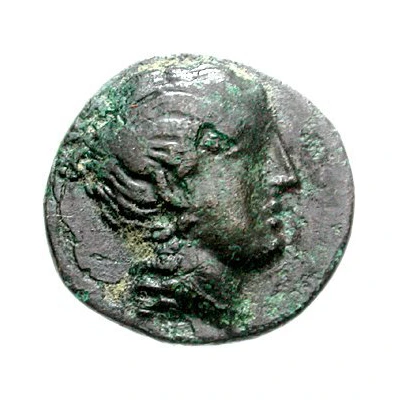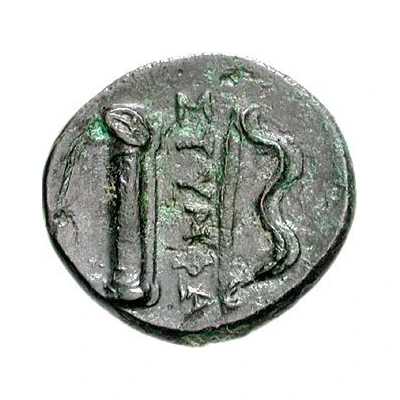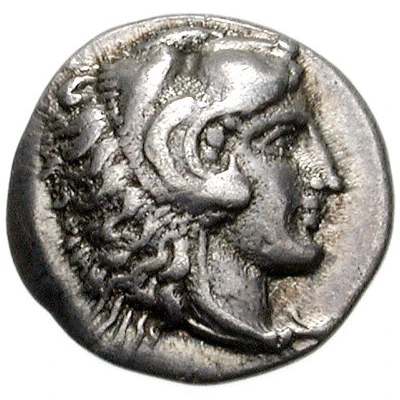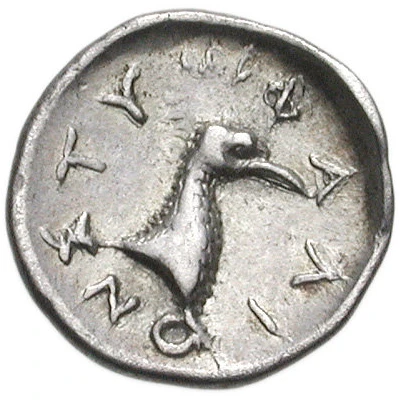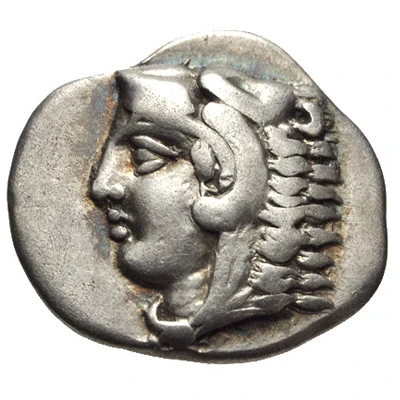
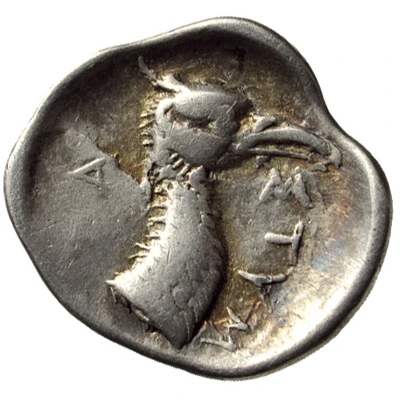

© Classical Numismatic Group, Inc.
Obol 370 BC - 350 BC
| Silver | 0.91 g | 12.0 mm |
| Issuer | Stymphalos (Arkadia) |
|---|---|
| Type | Standard circulation coin |
| Years | 370 BC - 350 BC |
| Value | Obol (⅙) |
| Currency | Drachm |
| Composition | Silver |
| Weight | 0.91 g |
| Diameter | 12.0 mm |
| Shape | Round (irregular) |
| Technique | Hammered |
| Demonetized | Yes |
| Updated | 2024-10-09 |
| Numista | N#144997 |
|---|---|
| Rarity index | 100% |
Reverse
Head of water bird without crest right with inscription on the right
Script: Greek
Lettering:
ΣΤΥΜΦ
Α
Comment
Warren, Kato 76.
Interesting fact
The Obol coin from Stymphalos (Arkadia) was used as a form of currency in ancient Greece during the 4th century BC. It was made of silver and weighed approximately 0.91 grams. Despite its small size, the Obol was an important coin in ancient Greece, as it was widely used for trade and commerce. In fact, the Obol was the smallest denomination of currency used in ancient Greece, and it was often used to purchase small items, such as food or other everyday goods. Interestingly, the Obol coin was also used as a form of social status symbol. The wealthy and elite would often carry large quantities of Obol coins as a display of their wealth and status. In contrast, the poor and working class would often carry fewer Obol coins, as they were less able to afford them. Overall, the Obol coin played an important role in the economy and society of ancient Greece, and it remains an interesting and valuable artifact for historians and collectors today.
